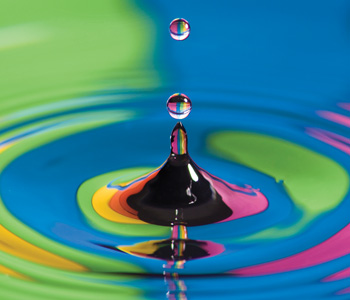Feature
Droplet Lasers
Airborne droplets—celebrated for generating rainbows and glories—can function as tiny resonant cavities enabling new kinds of lasers.
 [iStock]
[iStock]
Since the dawn of civilization, humans have been fascinated by optical effects arising from the interplay between natural light and airborne liquid droplets—celestial light shows that have become tightly woven into myth and legend across cultures. The most familiar of these interactions, and arguably the most spectacular, is the rainbow. But other atmospheric optical phenomena, such as fogbows, solar coronas and glories, are also characterized by the presence of rotationally symmetric, colorful light patterns appearing in the sky, resulting from refraction, reflection and scattering of light from aqueous aerosol droplets.
…Log in or become a member to view the full text of this article.
This article may be available for purchase via the search at Optica Publishing Group.
Optica Members get the full text of Optics & Photonics News, plus a variety of other member benefits.
